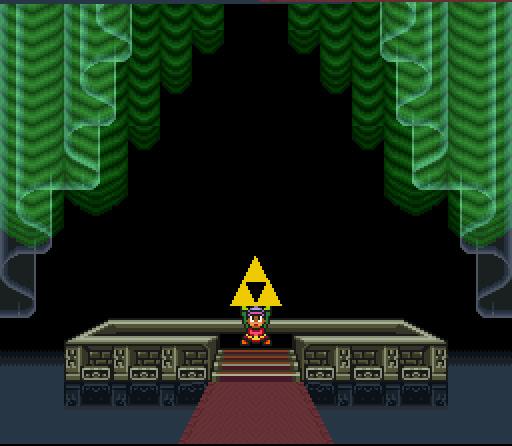 So I briefly made a mention of something I have dubbed "Triforce Logic." Allow me to elaborate on how much of a nerd I am. The Triforce comes from the Legend of Zelda series, it's the almighty, wish-granting, deus-ex-machina artifact forged by a triad of goddesses that is made of up of three separate but equal units (representing power, wisdom and courage) but is sometimes a third is broken into 8 or 12 to prevent some horrible baddie from getting their hands on it. On several occasions, the hero Link has to either collect or reclaim parts of the Triforce in hopes of restoring peace to his beloved Hyrule.
So I briefly made a mention of something I have dubbed "Triforce Logic." Allow me to elaborate on how much of a nerd I am. The Triforce comes from the Legend of Zelda series, it's the almighty, wish-granting, deus-ex-machina artifact forged by a triad of goddesses that is made of up of three separate but equal units (representing power, wisdom and courage) but is sometimes a third is broken into 8 or 12 to prevent some horrible baddie from getting their hands on it. On several occasions, the hero Link has to either collect or reclaim parts of the Triforce in hopes of restoring peace to his beloved Hyrule.But the number in question here is "3". Three is a good number. I'm not the first person to see three as a good number, in fact most religions have some sort of important thing in relation to the number (Christianity, Hinduism, Taoism, etc.) It is probably from one of these religions that the creators of the Zelda series borrowed the idea for the Triforce. Most likely Christianity, since during the first few games on the Nintendo Entertainment System (or famicom if you happen to be Japanese) Link's shield has a Latin cross on it. In Dante Alighieri's The Divine Comedy, he uses the number three in numerous ways as well with his writing style of terza rima. In fact, it was from my research of Dante's works that I eventually came across this idea.
Back on point: when in doubt, use the number 3. It turns out a lot of things can be categorized into threes in our world. Think about it: Meals of the day (breakfast, lunch, dinner), Parts of a story (beginning, middle, end), that cup of tea you have in front of you (excluding the cup the water, the tea/teabag, sugar/cream/other fixings) and etc. The list can go on and on. Now, I know that there are somethings that don't go into three because there are too many or too little parts. But remember how I mentioned before that the Triforce thirds can be broken down? One of the threes can be broken down into eight. So, we have a 1 that is made up of 8 which if all three were broken down would become 24. See what I did there? So the magic number(s) now are 1, 3, 8 and 24. The lower your number, the better unity I believe you'll have. A series of three is better that a series of 8 or 24, but when 3 is too low for what you are trying to achieve, try the higher numbers to maintain some of that unity.
This is a rough concept of what I call "Triforce Logic." It's not really something to live by but I think it is something to think about whenever you are starting a project. Regardless of whether or not you are into adding philosophy into your work (whatever that may be), keep in mind that the number three may be a nice place to start.

Technically, A Link to the Past takes a lot of inspiration from Hinduism, though I guess the concept of three Triforce pieces had already been established at that point. :P
ReplyDeleteFunny thing you should mention that. There is the Tridevi, the three main goddesses of Hinduism that are very similar to the three goddesses of Hyrule. Although they don't elaborate on the goddesses much in A Link to the Past.
ReplyDeleteAnd I always focused more on the Trimurti... d'oh!
ReplyDeleteThere's also Agni, who has a whole bunch of similarities to Agahnim, and the seven Tantric Chakras, including Sahasrara, Ajna, and Muladhara (Sahasrahla, Aginah, and Mudora?) Kinda makes me wonder if Mudora was one of the seven sages, and if Sahasrahla and Aginah were supposed to be named after their ancestors. But maybe that's going too far into timeline theorising silliness. :P
Oh, and speaking of sages, Brahmā created the universe with the help of the Saptarishi, or seven great sages. *nerdgasm*
Well, this is very interesting. I didn't realize that the connection between the game and Hinduism was this strong.
ReplyDelete